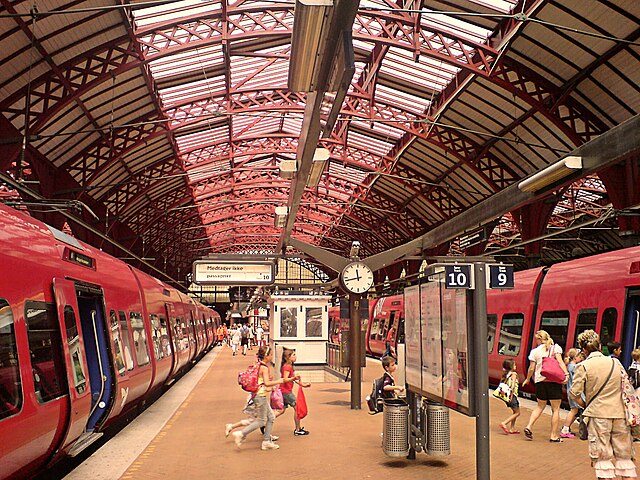Transport in Denmark is developed and modern. The motorway network covers 1,111 km while the railway network totals 2,667 km of operational track. The Great Belt Fixed Link connecting the islands of Zealand and Funen and the New Little Belt Bridge connecting Funen and Jutland greatly improved the traffic flow across the country on both motorways and rail. The two largest airports of Copenhagen and Billund provide a variety of domestic and international connections, while ferries provide services to the Faroe Islands, Greenland, Iceland, Germany, Sweden, and Norway, as well as domestic routes servicing most Danish islands.
The Great Belt Fixed Link connecting the islands of Zealand and Funen across the Great Belt was opened in 1997
Aalborg airport in the north of Jutland
Rødbyhavn ferry terminal on Lolland
Copenhagen Central Station with S-Trains.
DSB, an abbreviation of Danske Statsbaner, is the largest Danish train operating company, and the largest in Scandinavia. While DSB is responsible for passenger train operation on most of the Danish railways, goods transport and railway maintenance are outside its scope. DSB runs a commuter rail system, called the S-train, in the area around the Danish capital, Copenhagen, that connects the different areas and suburbs in the greater metropolitan area. Between 2010 and 2017, DSB operated trains in Sweden.
The first railway station in Copenhagen
The first Little Belt Bridge was opened in 1935.
Passenger train showing the red/black livery introduced in 1972.
The IC3 trains were introduced in 1990.








